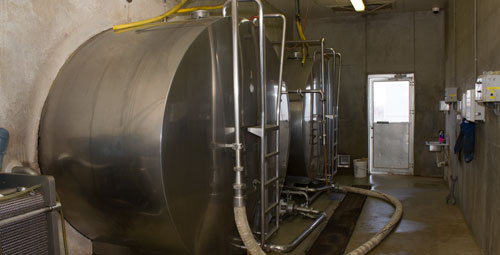
This past year, the Northeast Federal Milk Marketing Order Administrator once again sent two calibration trucks out in the field to check whether or not on-farm bulk tanks were accurately measuring milk weights. After logging 26,800 miles throughout 2013, the Northeast order calibration team found that 14 of the 258 bulk tanks they inspected were not accurately reading milk weights on their dipsticks. That comes out to 5.4 percent or roughly one in 20 tanks.
Of the tanks requiring recalibration, there was an almost equal split between those that were overmeasuring milk and undermeasuring milk. Of the tanks that were recalibrated, 62 percent were 1,500-gallon tanks (13,000 pounds) or smaller.
In addition to the 258 calibration checks, the Northeast order also performed 91 additional calibrations for situations that included tanks being moved, new installations or other random checks.
When a tank calibration is performed, the bulk tank is filled at four or five different levels as opposed to performing a complete calibration. A predetermined amount of water is metered into the tank to see if it matches the indicated weight on the gauge and calibration chart. If the tank is not accurately measuring milk (likely out of balance and not placed on a level floor), a full recalibration is performed where each dipstick level and the corresponding weight reading from the calibration chart is checked for accuracy. That can take place the same day or at a later date.








